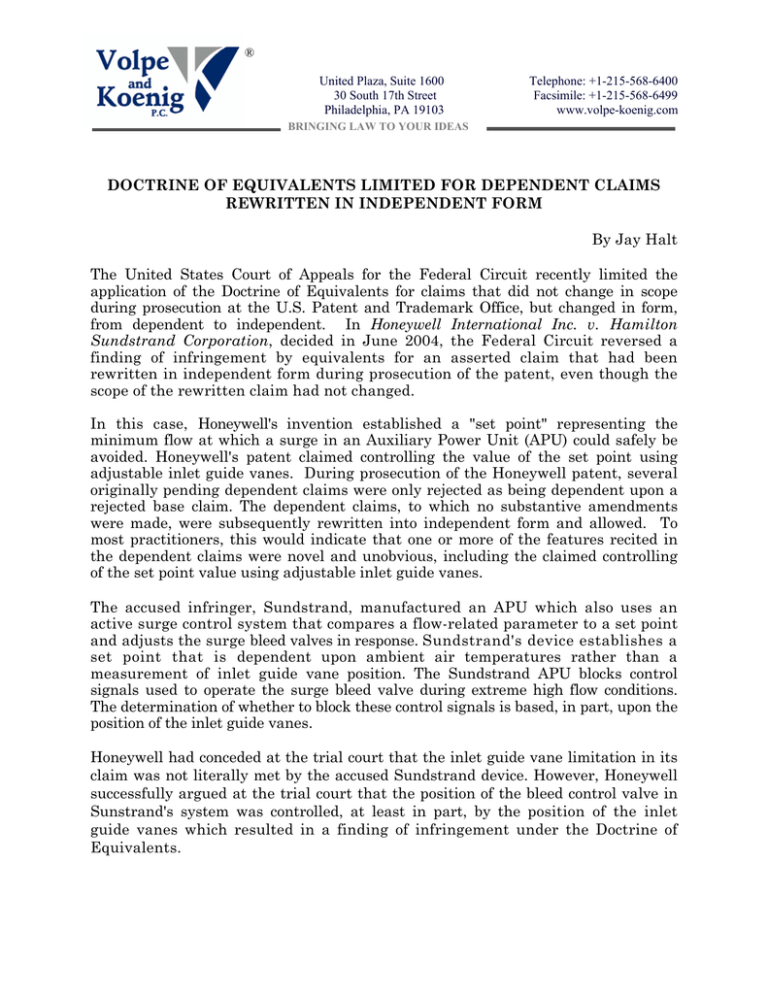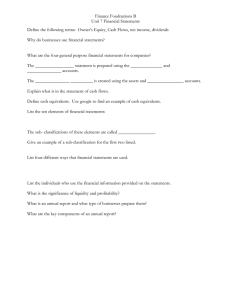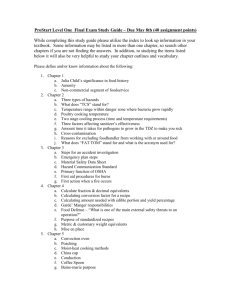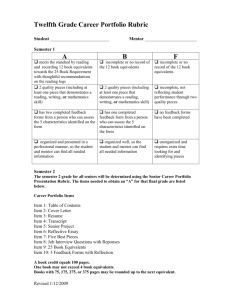Doctrine of Equivalents Limited for Dependent Claims Rewritten in
advertisement

® United Plaza, Suite 1600 30 South 17th Street Philadelphia, PA 19103 Telephone: +1-215-568-6400 Facsimile: +1-215-568-6499 www.volpe-koenig.com BRINGING LAW TO YOUR IDEAS DOCTRINE OF EQUIVALENTS LIMITED FOR DEPENDENT CLAIMS REWRITTEN IN INDEPENDENT FORM By Jay Halt The United States Court of Appeals for the Federal Circuit recently limited the application of the Doctrine of Equivalents for claims that did not change in scope during prosecution at the U.S. Patent and Trademark Office, but changed in form, from dependent to independent. In Honeywell International Inc. v. Hamilton Sundstrand Corporation, decided in June 2004, the Federal Circuit reversed a finding of infringement by equivalents for an asserted claim that had been rewritten in independent form during prosecution of the patent, even though the scope of the rewritten claim had not changed. In this case, Honeywell's invention established a "set point" representing the minimum flow at which a surge in an Auxiliary Power Unit (APU) could safely be avoided. Honeywell's patent claimed controlling the value of the set point using adjustable inlet guide vanes. During prosecution of the Honeywell patent, several originally pending dependent claims were only rejected as being dependent upon a rejected base claim. The dependent claims, to which no substantive amendments were made, were subsequently rewritten into independent form and allowed. To most practitioners, this would indicate that one or more of the features recited in the dependent claims were novel and unobvious, including the claimed controlling of the set point value using adjustable inlet guide vanes. The accused infringer, Sundstrand, manufactured an APU which also uses an active surge control system that compares a flow-related parameter to a set point and adjusts the surge bleed valves in response. Sundstrand's device establishes a set point that is dependent upon ambient air temperatures rather than a measurement of inlet guide vane position. The Sundstrand APU blocks control signals used to operate the surge bleed valve during extreme high flow conditions. The determination of whether to block these control signals is based, in part, upon the position of the inlet guide vanes. Honeywell had conceded at the trial court that the inlet guide vane limitation in its claim was not literally met by the accused Sundstrand device. However, Honeywell successfully argued at the trial court that the position of the bleed control valve in Sunstrand's system was controlled, at least in part, by the position of the inlet guide vanes which resulted in a finding of infringement under the Doctrine of Equivalents. On appeal, the Federal Circuit held that rewriting a dependent claim into independent form is a narrowing amendment, which bars the application of the Doctrine of Equivalents for the subject matter added from the dependent claim to the original subject matter of the independent claim. This appears to be counter-intuitive because the subject matter for which equivalents are barred is in fact the very subject matter from the dependent claim that the patent examiner found to be novel and unobvious over the prior art. As a result, the generally accepted practice of filing one or more independent claims and a series of dependent which further narrow the independent claim can result in an unintentional loss of equivalents during prosecution, even if the scope of a dependent claim never changes. Several strategies have been discussed for dealing with this potential loss of equivalents for the very features of an invention which are novel and unobvious over the prior art. One suggestion, alluded to in a dissenting opinion of one Judge, is filing all claims in independent form. This would involve additional filing costs, and could potentially be more cumbersome for an examiner reviewing the application. However, it would currently avoid the Honeywell bar to equivalents. Alternatively, writing the patent specification to recite all known structural equivalents for any features believed to be novel and including “means plus function” limitations in the claims would at least allow for structurally equivalent elements to be covered by such claim limitations if they perform the identical function, which would not appear to have been the case in Honeywell This field of law is constantly developing and changing, and it would not be surprising to see the lost Honeywell equivalents resurrected in the future.


